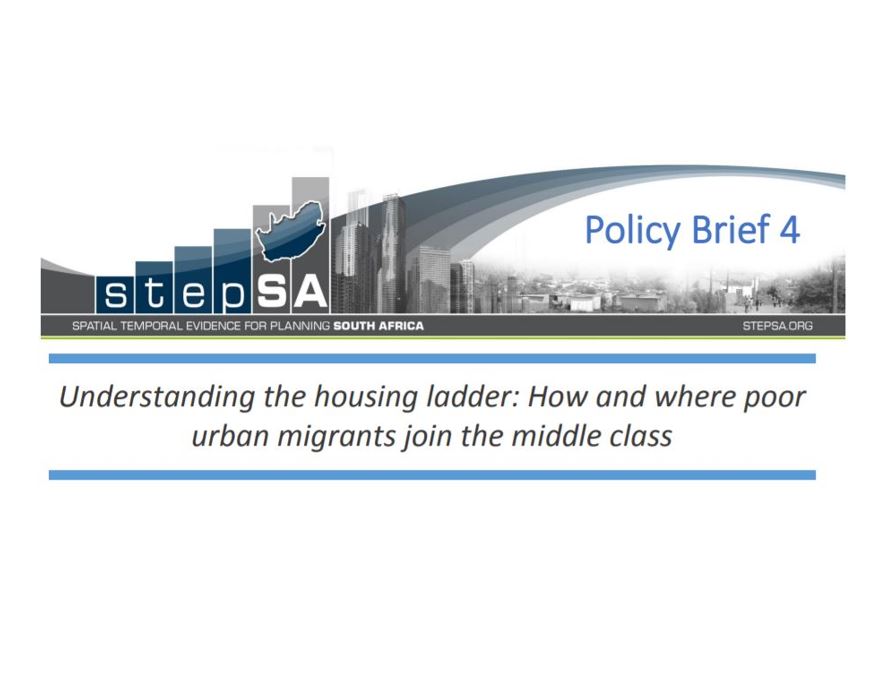Understanding the housing ladder: How and where poor urban migrants join the middle class
Policy Brief

01 January 2017
StepSA
English
Policy brief
Spatial Temporal Evidence for Planning South Africa (stepSA)
Africa
The then Minister in the Presidency for Planning, Trevor Manuel, highlighted the central importance of correct spatial location for human settlements for efficient working of the economy and reduction of unemployment. Noting that improper location of human settlements is ‘trapping and marginalising’ the poor, he called for a paradigm shift in planning, so as to transform city spatial form in South Africa.
This policy brief from the StepSA (Spatial and Temporal Evidence for Planning in South Africa) multi-year research enterprise addresses what urbanizing poor households in the metro shack settlements seem to be doing to overcome marginalization and enter the middle class through their own efforts, working from localities in the spatial zone of the urban periphery.
Abstract based directly on original source.


Comments